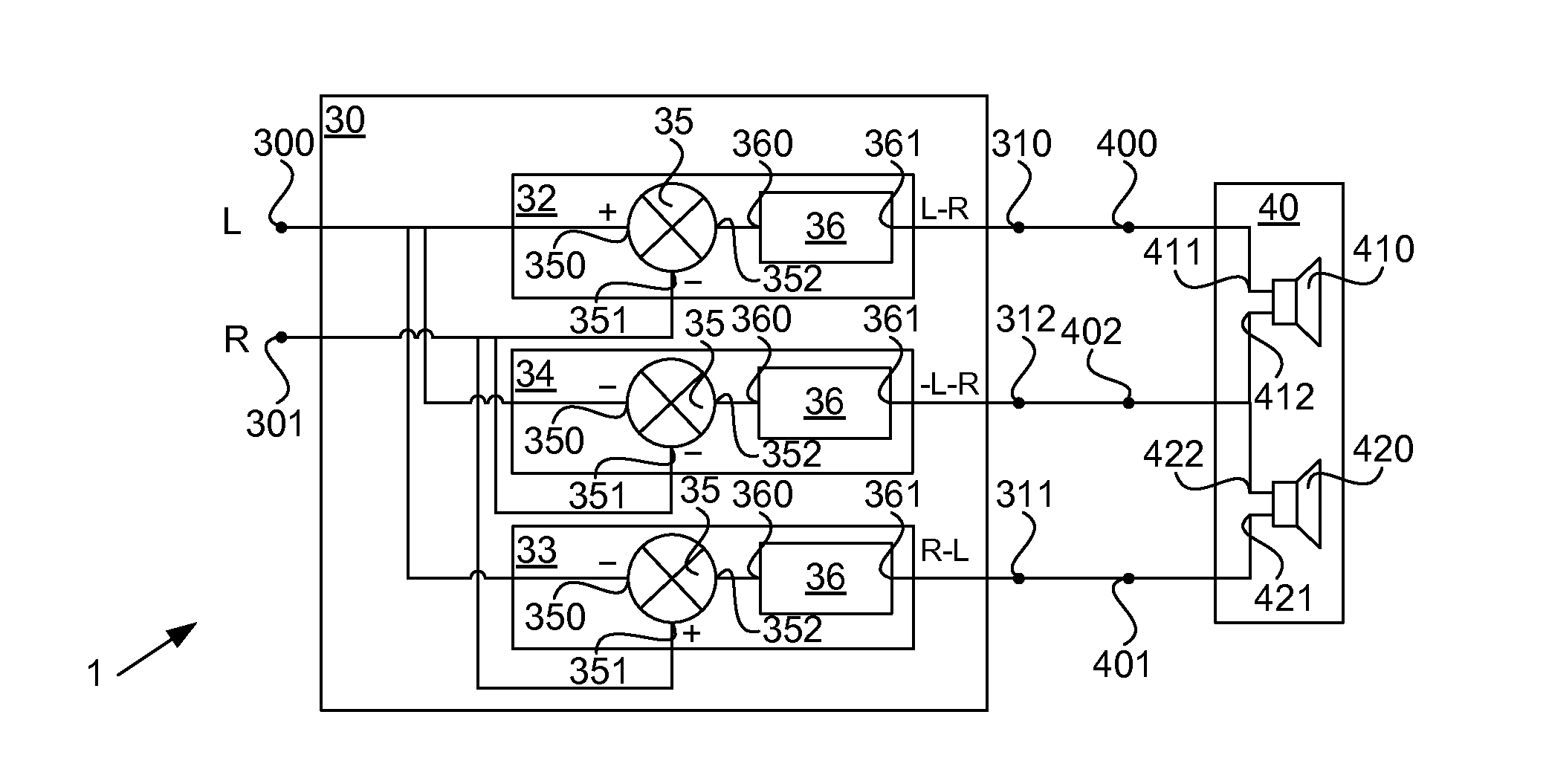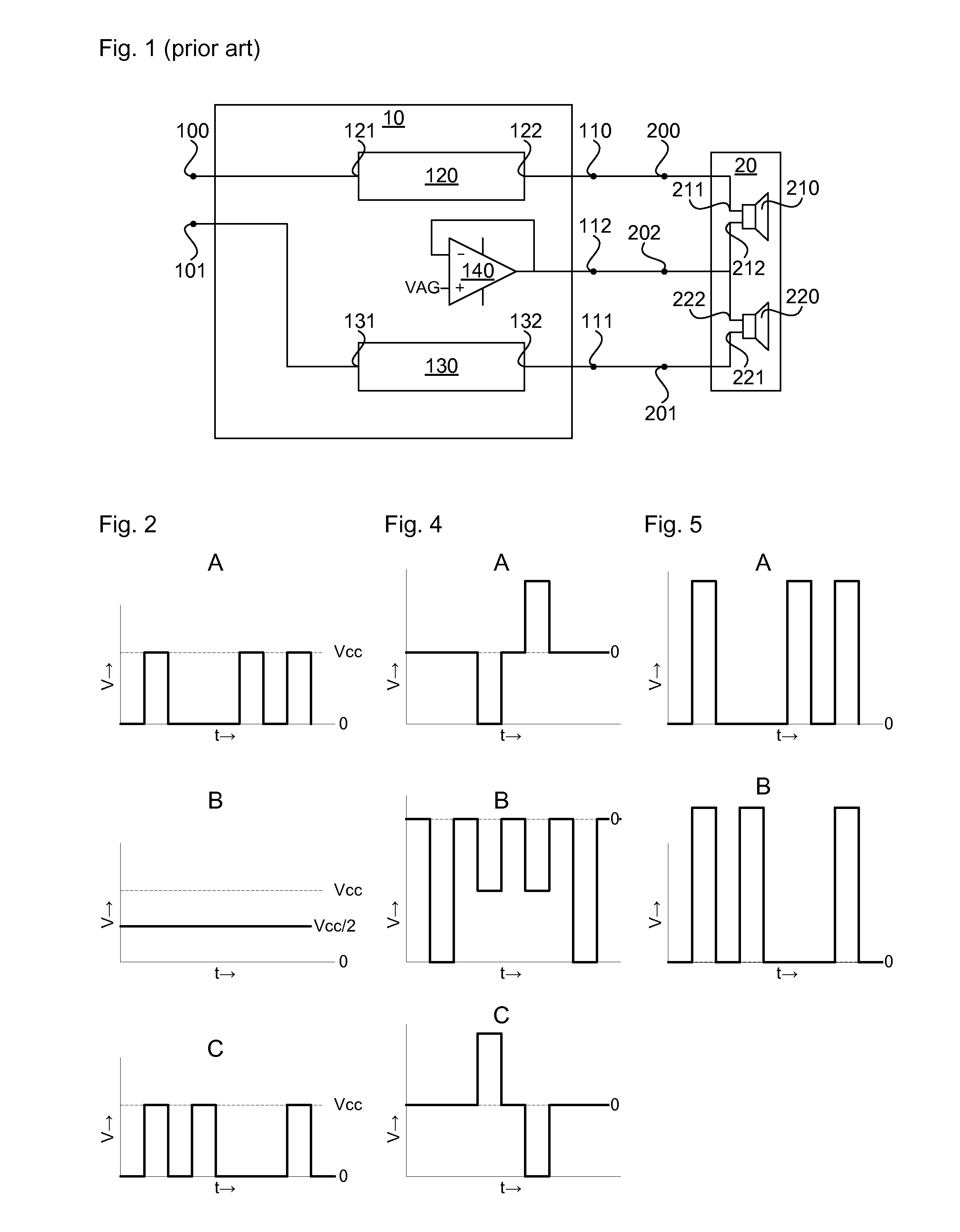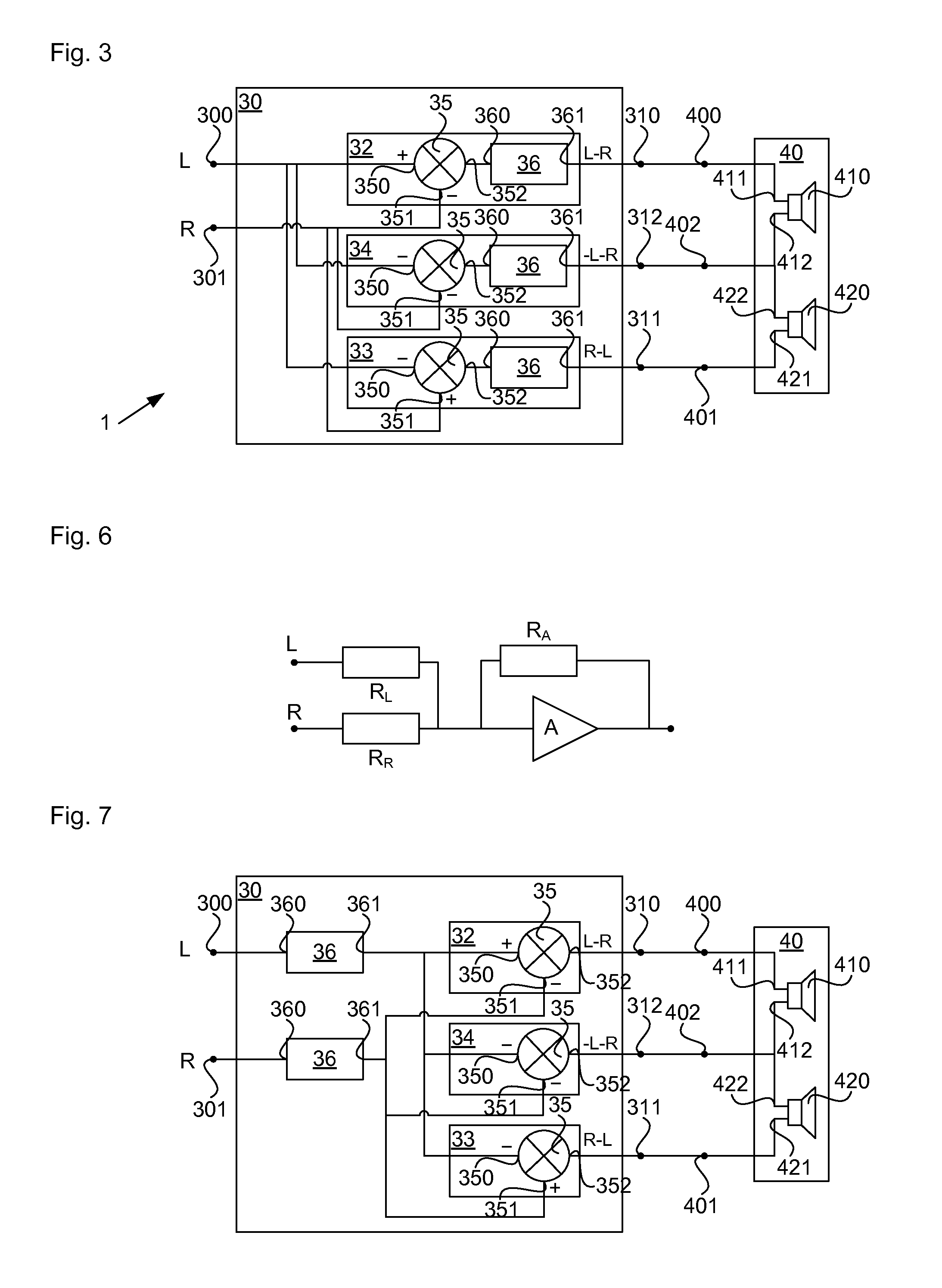Amplifier circuit audio circuit and electronic device
a technology of amplifier circuit and audio circuit, applied in the direction of stereophonic circuit arrangement, low frequency amplifier, electrical transducer, etc., can solve the problems of circuit b>10/b> consuming a relatively large amount of power, occupying a relatively large area, and requiring an accurate determination
- Summary
- Abstract
- Description
- Claims
- Application Information
AI Technical Summary
Problems solved by technology
Method used
Image
Examples
Embodiment Construction
[0019]Referring FIG. 3, an example of an embodiment of an amplifier circuit 30 is shown therein. The amplifier circuit 30 may, as shown, include a first input 300 for receiving first input signal and a second input 301 for receiving a second signal. As shown in FIG. 3, the amplifier circuit 30 may include a first amplifier section 32, a second amplifier section 33, as well as a common mode section 34.
[0020]In the following, the amplifier circuit 30 will be elucidated further using the example of a stereo audio signal which comprises a left channel signal which is to be outputted at a loudspeaker at a first side and a right channel signal which is to be outputted at a loudspeaker at a second side. The first input signal will be referred to as the left channel signal, the second input signal as the right channel signal, the first input will be referred to as the left channel input 300 and the second input will be referred to as the right channel input 301. The first amplifier section ...
PUM
 Login to View More
Login to View More Abstract
Description
Claims
Application Information
 Login to View More
Login to View More - R&D
- Intellectual Property
- Life Sciences
- Materials
- Tech Scout
- Unparalleled Data Quality
- Higher Quality Content
- 60% Fewer Hallucinations
Browse by: Latest US Patents, China's latest patents, Technical Efficacy Thesaurus, Application Domain, Technology Topic, Popular Technical Reports.
© 2025 PatSnap. All rights reserved.Legal|Privacy policy|Modern Slavery Act Transparency Statement|Sitemap|About US| Contact US: help@patsnap.com



